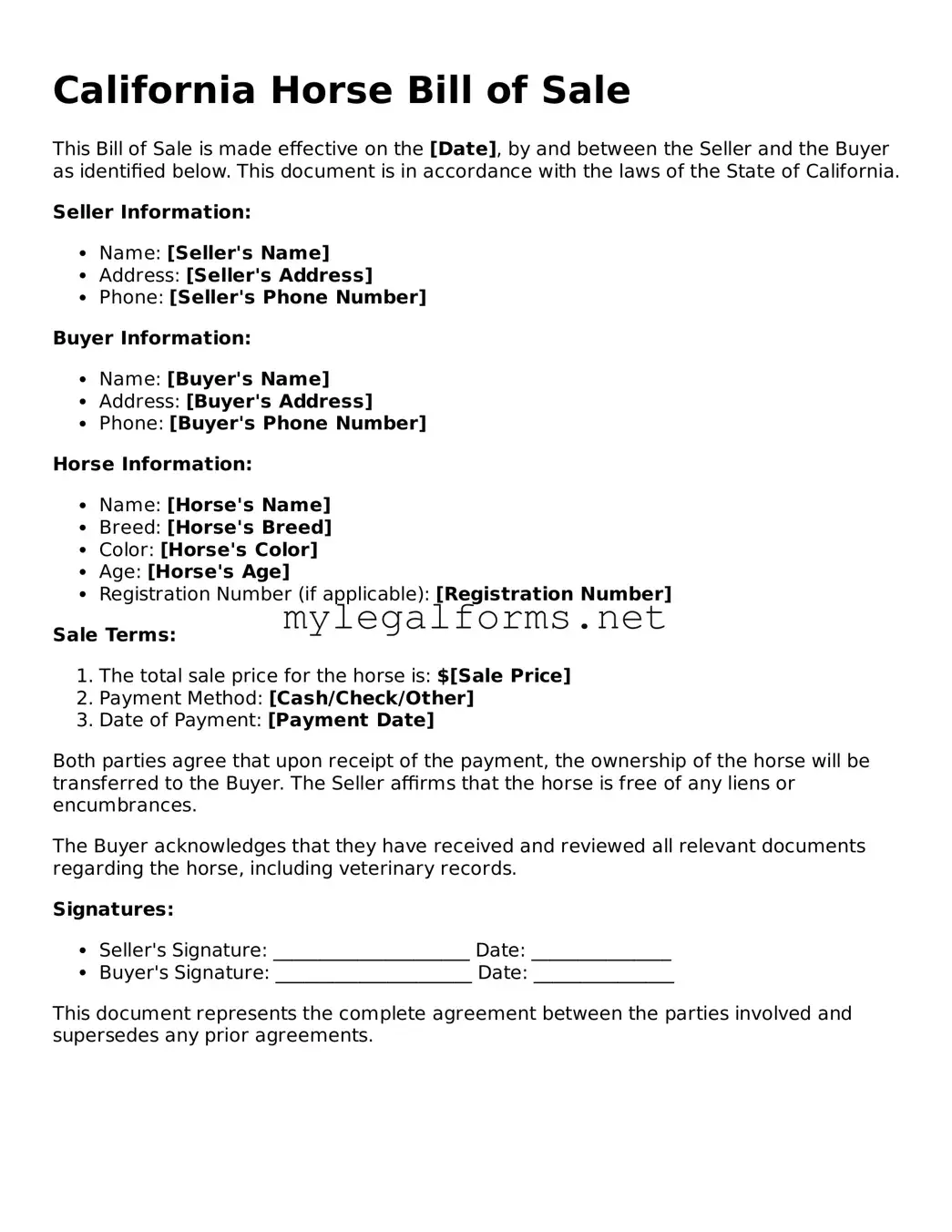Filling out the California Horse Bill of Sale form can seem straightforward, but many people make common mistakes that can lead to complications down the line. One of the most frequent errors is incomplete information. Buyers and sellers often forget to fill in critical details such as the horse's age, breed, or registration number. Omitting this information can create confusion and may even lead to disputes later on.
Another common mistake is not including a purchase price. This detail is crucial, as it establishes the value of the transaction for both parties. Leaving it blank or writing "negotiable" can create uncertainty and may complicate the transfer of ownership.
People often overlook the importance of signatures. Both the buyer and the seller must sign the document for it to be valid. A missing signature can render the entire sale void, leading to potential legal issues. It's essential to double-check that all required parties have signed before finalizing the transaction.
Additionally, failing to date the form is another mistake that can lead to problems. The date of the sale is significant for record-keeping and can affect the legal standing of the transaction. Without a date, it becomes challenging to establish when the ownership transfer occurred.
Misunderstanding the terms of sale is also a frequent pitfall. Buyers and sellers should clearly outline any conditions or warranties associated with the horse. Vague language can lead to misunderstandings and disputes later, so being specific is key.
Another area where mistakes often happen is in the description of the horse. Providing an inaccurate or vague description can lead to issues, especially if the horse has unique markings or characteristics. Take the time to ensure that the description is as detailed as possible to avoid future complications.
People sometimes forget to retain copies of the completed Bill of Sale. Both the buyer and seller should keep a copy for their records. This document serves as proof of ownership and can be crucial if any disputes arise in the future.
Another mistake is not considering local laws and regulations. While the California Horse Bill of Sale form is a standard document, specific counties or municipalities may have additional requirements. Failing to comply with local regulations can lead to legal headaches.
Lastly, neglecting to consult with a professional can be a significant oversight. Whether it's a lawyer or an experienced equine professional, seeking advice can help ensure that all aspects of the sale are handled correctly. This step can save time, money, and stress in the long run.
By being aware of these common mistakes, individuals can navigate the California Horse Bill of Sale process more effectively. Taking the time to fill out the form accurately can prevent future disputes and ensure a smooth transaction.
